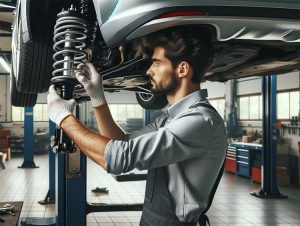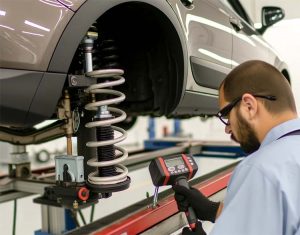Strut assemblies are integral to the suspension system of a vehicle, playing a pivotal role in ensuring stability, handling, and comfort. Specifically, when it comes to the rear of the vehicle, the question of “do strut assemblies work on rear?” is met with a definitive yes. Rear strut assemblies work to absorb shocks from road irregularities, maintaining tire contact with the road and thereby enhancing the overall driving experience. Unlike their front counterparts, rear struts are typically designed to cope with different load dynamics and contribute to the vehicle’s longitudinal and lateral balance.
The Mechanics of Strut Assemblies in Rear Suspension

Types of Rear Strut Assemblies
Rear strut assemblies come in various types, each designed to meet specific vehicle requirements and driving conditions. The common types include:
-
Standard struts, which offer a balance between comfort and performance for everyday driving.
-
Performance struts, designed for enhanced handling and stability at higher speeds or during aggressive driving.
-
Adjustable struts, allowing for customization of ride height and stiffness according to driver preference or road conditions.
This diversity ensures that there is a suitable option for nearly every type of vehicle and driver expectation, from casual city driving to more demanding performance applications.
Installation and Maintenance of Rear Struts Assembly

The Impact of Rear Strut Assemblies on Vehicle Performance
The rear strut assemblies significantly influence a vehicle’s performance, affecting handling, stability, and comfort. A well-functioning rear strut system can improve the vehicle’s response to steering inputs, enhance grip during acceleration and braking, and reduce body roll during cornering. Additionally, by absorbing road shocks more effectively, rear struts contribute to a smoother and more comfortable ride, reducing fatigue for drivers and passengers alike.
Comparing Front and Rear Strut Assemblies
While both front and rear strut assemblies serve to improve vehicle stability and comfort, their roles and functioning differ due to the vehicle’s dynamics. Front struts primarily handle the steering forces and a greater portion of the braking forces, requiring them to be robust and responsive. Rear struts, on the other hand, focus on maintaining balance and stability, especially under acceleration and cornering forces. This differentiation is crucial for achieving an optimal suspension setup that balances performance and comfort.
Conclusion
Rear strut assemblies are essential components of a vehicle’s suspension system, ensuring stability, handling, and comfort. Whether standard, performance, or adjustable, the right type of rear struts assembly can significantly enhance the driving experience. Proper installation and maintenance are key to leveraging the benefits of rear struts, emphasizing their impact on vehicle performance. For enthusiasts looking to further enhance their ride, exploring the Best Aftermarket Shocks for F150 in another article can offer additional insights into suspension upgrades. Understanding the mechanics and benefits of rear strut assemblies allows drivers to make informed decisions about their vehicle’s maintenance and upgrades, ensuring a safer and more enjoyable driving experience.

